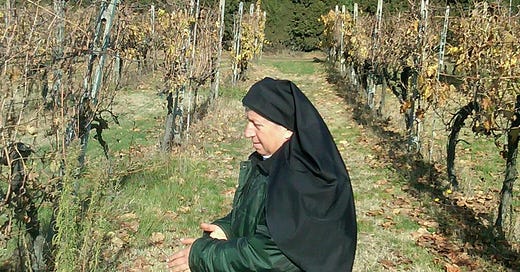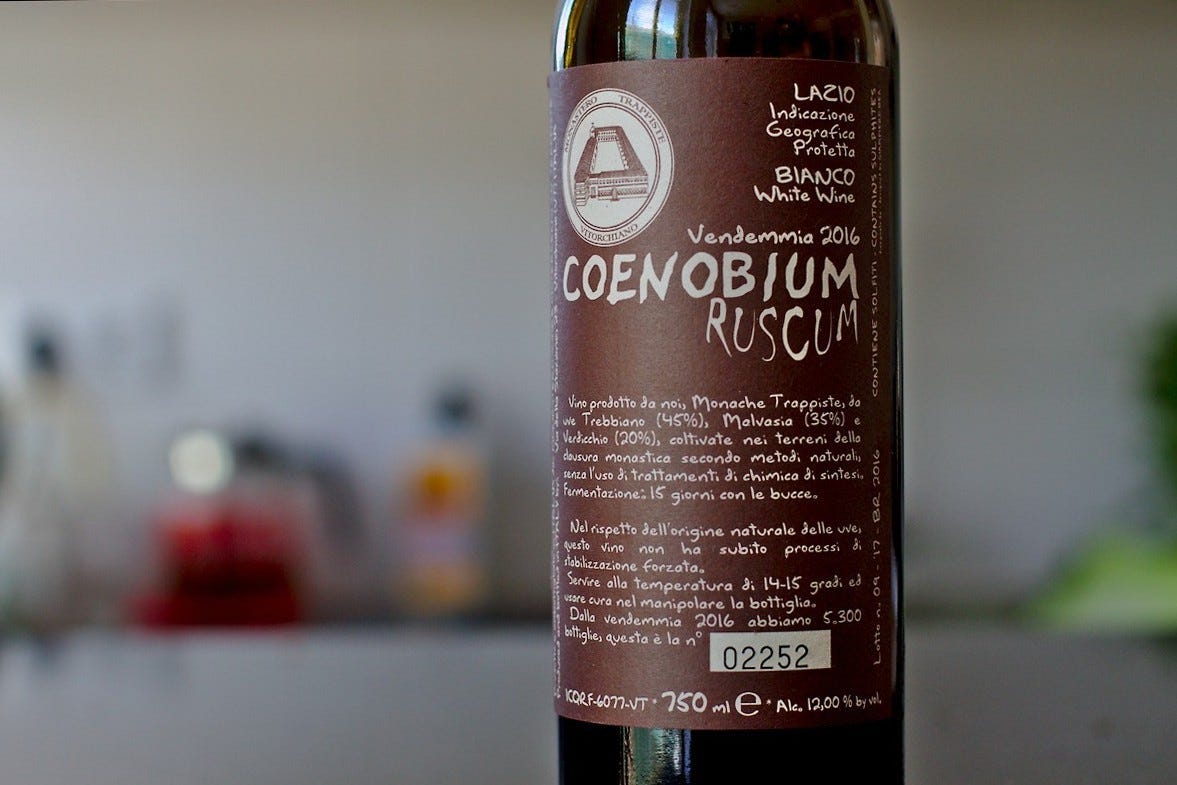Another religious experience - Coenobium Ruscum
Religious orders are always good for tasty, traditionally made beverages. Simon reviews the latest vintage of Coenobium from the Cistercian nuns at Vitorchiano.
With the end of dry January (no, mine wasn't), there's been yet another slew of reports and discussions about the evils of alcohol. The new temperance movement is an increasingly powerful force, especially in the corridors of UK Gov it seems. Luckily, their views aren't shared by many of the world's most well established religious communities. Monasteries from Georgia to Belgium have created some of the most delicious beverages known to man over the past centuries. The contemplative life of religious orders obviously sits well with the patience required to make great wine - and to carefully tend vines over a whole year.
The cistercian order of nuns at Monastero Suore Cistercensi, near Vitorchiano in Lazio planted their vineyard in 1963, but it wasn't until the early 2000s that their wines began to attract more attention. That was largely down to the employment of their winemaking consultant Giampiero Bea, who has made the wines ever since. For those who know Bea's work at the Paolo Bea…
Keep reading with a 7-day free trial
Subscribe to The Morning Claret to keep reading this post and get 7 days of free access to the full post archives.





